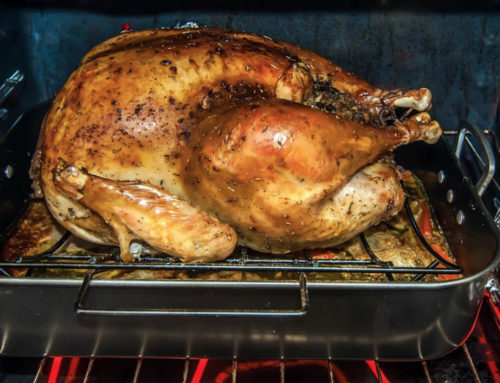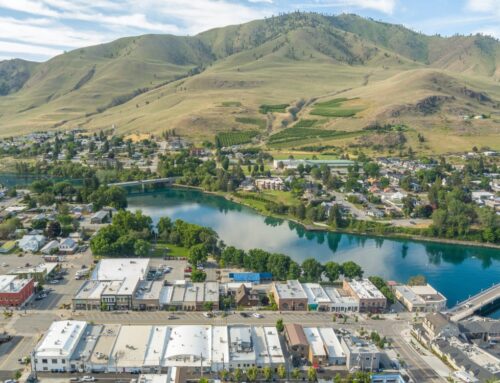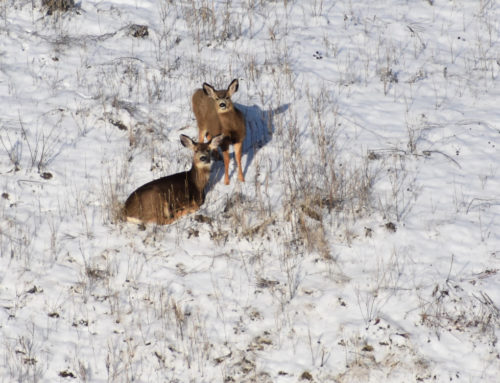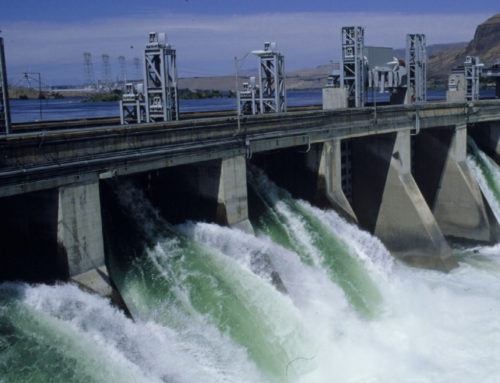Legislation, endorsed by Washington Fire Chiefs and American Lung Association, generates $63 million each year to reduce state’s wildfire danger
Information released by Commissioner of Public Lands
Commissioner of Public Lands Hilary Franz and state legislators, flanked by fire chiefs and public health advocates, unveiled a proposal on December 2nd to provide – for the first time – dedicated funding to improve Washington’s wildfire response capability and restore wildfire resistance in our forests.
The funding would be the largest investment Washington has ever made to expand its wildfire team and restore the health of its forests.
“Wildfire poses a clear and present danger to the health of Washington’s people, environment, and economy,” said Commissioner Franz. “As the leader of our state’s wildfire fighting force, I know we must continue to be proactive – not reactive – if we are going to reclaim the clear, blue summer skies we know and love.
“Our firefighters and scientists have given us the blueprint to protect our communities from flames and smoke, it’s time for us to have their backs and give them what they need to get the job done.”
The legislation, which will be introduced in both the state Senate and state House of Representatives, creates a first-of-its-kind Wildfire Prevention and Preparedness Account. This account, funded with $126 million each biennium, will make critical investments in two strategies proven to reduce wildfires: ensuring fire crews have the resources they need to keep fires small and restoring forest health.
“Wildfires are a major contributor to Washington’s greenhouse gas emissions, exacerbating climate change and increasing the risk of future fires,” said Rep. Joe Fitzgibbon, D-West Seattle, and sponsor of the House bill. “They also cause severe harm to air quality in every part of Washington state, causing harm to the health of every Washingtonian, particularly seniors, children and infants, and individuals with respiratory problems. By investing in preventing these wildfires before they begin, we can avoid many of these air quality impacts and enable Washington’s forests to continue sequestering millions of tons of carbon dioxide each year.”
“With climate change causing more frequent and more fierce wildfires, it’s vital we take the right steps now that can prevent wildfires from becoming the new normal,” said Sen. Kevin Van De Wege, D-Sequim. “Merely responding to fires, as we have traditionally done, costs far more in dollars, property and even human life than if we actively remove ground fuels and take other actions to make our wildlands healthier and more fire resistant. But that kind of strategy requires a stable revenue source.
“The Wildfire Prevention and Forest Health Account will enable DNR to build a 21st century wildfire fighting force that can respond more quickly in the event of a fire while also proactively taking steps to prevent or limit the scope of fires and even prevent many fires from starting in the first place. We’ll spend less on wildfires in the long run, and every fire we prevent or shrink will reduce the threat to lives, property, and taxpayer dollars.”
Immediate, Tangible Investments in Wildfire Protection
This legislation protects our communities by ensuring firefighters have the resources and training they need to get to fires quickly and keep them small, which prevents the megafires that threaten neighborhoods and cost millions of dollars to suppress. The 2018 Crescent Mountain Fire outside Twisp alone cost more than $40 million to suppress.
Immediate funding priorities, guided by DNR’s Wildland Fire Protection 10-Year Strategic Plan, include:
- 42 full-time firefighters ($8.4 million),
- 15 fire engine leaders and fire trucks ($5.2 million),
- 1 modern Type 2 helicopter ($25.6 million),
- Investments to protect fire-prone communities in the wildland-urban interface ($15 million),
- Assistance and resources to help property owners and small forest landowners secure and protect their property from wildfire ($7.5 million),
- Training experts throughout the state to train volunteer firefighters at local fire districts and departments ($1.9 million).
“The Washington Fire Chiefs fully support the DNR’s funding bill as it is local fire chiefs and the citizens we serve who depend on and benefit from an adequately funded state wildland fire strategy,” said Wayne Senter, executive director, Washington Fire Chiefs.
Immediate, Tangible Investments in Forest Health
An additional $26.25 million will be used to implement and accelerate DNR’s 20-Year Forest Health Strategic Plan, which calls for the restoration of 1.25 million acres of forest to health through selective thinning and prescribed burns.
Washington’s forests are in a critical state. Millions of acres are overcrowded, filled with diseased and dying trees, and at high risk for catastrophic wildfires.
“As Washingtonians, we all care deeply about the air we breathe, the forests where we work and play, and the clean water and wildlife they support,” said Mike Stevens, Washington state director for The Nature Conservancy, “We can’t keep kicking the can down the road. It’s time to recognize the reality of fire in our forests and make the long-term investment our forests and our communities need.”
An Affordable, Common-Sense Funding Source
Revenue for the Wildfire Prevention and Preparedness Account will come from a surcharge of just a few cents on property and casualty insurance premiums. For the average household, the cost will be just over $1 per month.
“By sharing the burden, we acknowledge that wildfire impacts all of us and minimize the cost to each household – just over $1 per month, cheaper than a Coke,” said Commissioner Franz. “In the end, proactive investments will reduce damage and cost by preventing wildfires before they start.
“It’s no secret that big insurance companies are going to fight us. We are ready for this fight. Indeed, nothing is more important than protecting our communities and our firefighters. And I know the people of Washington are with us.”
By Being Proactive, We Reduce Cost and Damage
In 2015, the Department of Natural Resources, Washington’s wildfire fighting force, responded to 1,541 wildfires, and 1.14 million acres burned – the most ever. In 2018, DNR responded to 1,850 wildfires – a record high – and 440,000 acres burned.
This year, DNR crews battled 1,165 fires, and 130,000 acres burned. Nearly 40 percent of fires over the last two years were west of the Cascades.
According to a 2018 study commissioned by the U.S. Forest Service, 2.2 million homes in Washington are exposed to wildfire risk.
The cost of fighting wildfires is immense, averaging $153 million per year over the past five years. And suppression expenses make up only 9 percent of the total cost of wildfires once health impacts, disaster recovery, and lost business, infrastructure, and habitat impacts are considered.
Money spent proactively to reduce and prevent wildfires reduces the long-term costs inflicted by megafires and severe fire seasons. A study commissioned by Oregon’s Federal Forest Advisory Committee found that every $1 spent on forest treatments potentially saves the government $1.45 in fire suppression costs.
“The American Lung Association recognizes climate change as the greatest public health threat of our time – and we are seeing the impacts right here in our state. In recent years, catastrophic wildfires have blanketed our skies with smoke, impacting public health,” said Carrie Nyssen, senior director of advocacy, American Lung Association. “Our children, our elderly, and those with chronic health conditions are particularly vulnerable to poor health outcomes when they breathe smoke-filled air.
“The American Lung Association greatly appreciates the thoughtful planning and work that has gone into the proposal to improve forest health to reduce catastrophic wildfires.”
Building Economic Opportunity
Investments in forest health create family wage jobs, especially in rural communities. Just this year, two cross-laminated timber facilities have opened in Spokane Valley and Colville.
These facilities are able to turn the small diameter timber thinned from unhealthy forests into environmentally friendly building materials for our towns and cities.
Materials/Resources








